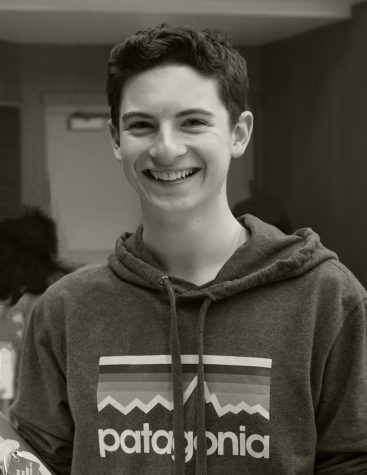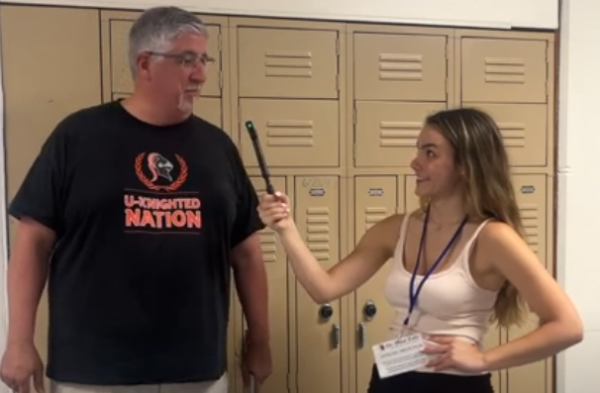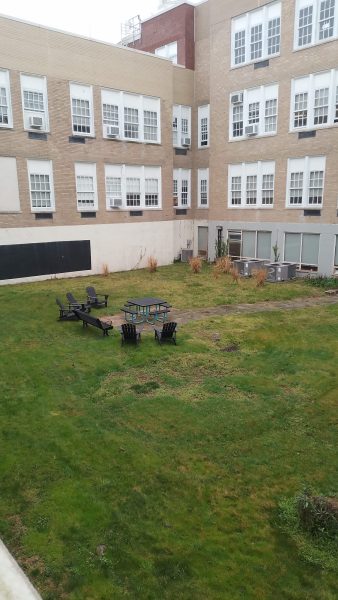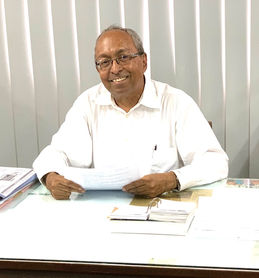An Interview with Superintendent Earl Kim
Round Table Reporter and Multimedia Editor Sam Diamond sat down with Superintendent Earl Kim for a wide-ranging interview about leaving Hawaii, his background in the Marine Corps, and those infamous snow day calls.
March 6, 2019
Sam Diamond: [00:00:11] What made you want to come to Stamford from Hawaii?
Earl Kim: [00:00:13] Oh, that’s a tough one. So Hawaii was my home. You know that I was born and raised there and left there when I was 17 to go off to college. When I got called to go back to serve in Hawaii, it was a no brainer, and I had the privilege of serving the Native Hawaiian community, which is not unlike the Native American community on the continent – struggling with issues of cultural identity and preservation as well as promoting lifelong success for the graduates of the institution. It was a great mission.
It turns out the issues that the institution the Kamehameha Schools had were very similar to the challenges we have here in Stamford: over 50 percent were first-generation college goers. So they really didn’t have that experience in their background. There was a big question about the role that culture played in education. And it’s a nuanced issue, because we recognize that while they are Native Hawaiian and have an indigenous culture of their own and a language of their own – that was part of the colonization of Hawaii and was like many colonized cultures lost in the transition – that there was an obligation of the institution to serve to preserve that culture, yet equip the students to succeed wherever they would go in the world. And many would travel the world and serve in jobs that you and I would end up in. The institutions the Kamehameha Schools had were very similar to the challenges we have here in Stamford: over 50 percent were first-generation college goers. — Superintendent Earl Kim
So that was my experience in Hawaii, and what drew me back to the continent were personal factors. My family – and I have an elderly father down in Maryland, my son was down in Maryland, my daughter was on the East Coast at the time – so I was drawn back. A headhunter sent something my way, and I thought, wow, this is a lot like the institution I’m currently serving, except one was private with an 11 billion dollar endowment while one was public with few resources, relatively speaking. But the same challenges [were present] educationally: wrestling with issues of poverty, of first-generation college-going, of having a diverse environment. So this meant that schools had students who literally grew up on Hawaiian homelands, similar to a reservation here, and students whose families were extremely well resourced – so not unlike Stamford. So that part was an easy transition for me.
And being back on the East Coast allowed me to help out with my family as I need to. And that’s what really drew me to Stamford. And since being here, I’ve been excited by the community, because this community seems to get it, seems to understand that there’s a lot more to education than what we read in The Advocate. Actually, The Round Table, when they were publishing articles in The Advocate last year, I felt brought to surface those really relevant issues – current issues – that students confront every day, which are the ones that we should be focused on as a school system.
Sam Diamond: [00:04:03] Can you tell me a little bit about your family?
Earl Kim: [00:04:06] Sure. Let’s see. I have a daughter who is a Marine Lieutenant out in Yuma Arizona. I have a son who is a Midshipman Second Class at the Naval Academy, who is also planning to go into the Marines when he graduates.
Sam Diamond: [00:04:24] Since you mention that your kids are in the military, can you tell me a little bit about your time in the Marines?
Earl Kim: [00:04:30] Sure. When I graduated I went to college on a Navy ROTC scholarship, went into the Marine option, and after graduating in 1984, was commissioned as a Lieutenant. Out of the basic school I served as a Platoon Commander, as a Company Commander, and as a Series Commander on Parris Island South Carolina. I deployed throughout the Western Pacific, from Southeast Asia to the eastern part of the Western Pacific Marshall Islands, to the Philippines, Korea, Japan. I went to a lot of different places with the Marines.
Sam Diamond: [00:05:13] What made you decide to leave the Marines?
Earl Kim: [00:05:17] Well, that was a tough one. Someone asked me recently what I would be doing if I weren’t a superintendent, and it’s a no-brainer to me – I would still be a Marine. The hardest decision I made in my life was to leave the Marine Corps. It had raised me. It had provided me with a local vertical, and I was extremely comfortable in that culture. I served with some of the finest people in the Marines. My platoon sergeant became the sergeant major of the Marine Corps, which is the top ranking enlisted man. My classmate, my church mate from way back when, is now the assistant commandant and my executive officer while at the basic school is now the commandant of the Marine Corps. So it’s a small service, but really a world filled with great people.
The challenge for me was that I knew from an early age that I was supposed to go into education, that this was what I should be doing. And here I was being tempted to go on another path. And for me what it came down to was, did I want at the end of my life to be part of something that I knew to be constructive, or did I want my legacy to be something that was at its core destructive in nature, though for a greater purpose? And so it was with a heavy heart that I submitted my resignation and drove off of the drill field at Parris Island after my last parade to start my career as an educator. It was with a heavy heart that I submitted my resignation and drove off of the drill field at Parris Island after my last parade to start my career as an educator. — Superintendent Earl Kim
Sam Diamond: [00:07:11] So what are some of the most challenging parts about being a superintendent in Stamford?
Earl Kim: [00:07:20] The most challenging thing actually, I think, is changing public perception – not just of our schools. I think that will take care of itself. But changing the public perception of what public schools ought to be, the purposes of public schools, the purposes of schools generally, what it is that constitutes a great education. Those are things that we take for granted. And just to give you a quick concrete example, we’re so used to hearing about the numbers that our schools produce. How Stamford ranks against this school or that school using this metric. And that’s actually a relatively recent phenomenon. In the last three decades prior to that, the discussion about education was much more fulsome; it was a deeper understanding of what education was and ought to be, its purposes within a democratic society.
So that’s the most challenging part about the job is that we’re working in this narrowly defined, artificially designed policy box of what education ought to be, when we should be having a much broader discussion. And I think that if we did that successfully – and I think Stamford is probably the best community to do that in – that education in this state, education in this country, we would go through the roof. There is so much energy and ability that isn’t captured by a test score or an average. I think we would unleash a lot of creative talent in our schools if that were to happen. So that’s the hardest thing about the job. There is so much energy and ability that isn’t captured by a test score or an average. — Superintendent Earl Kim
Sam Diamond: [00:09:17] A lot of people here think that you are just the guy who calls the snow days. So how does that go into effect, or what’s that like?
Earl Kim: [00:09:26] Well, it’s a lot easier than you think. I just flip a coin in the morning and decide what we’re gonna do! But no, actually really what we do is, we have a very brief meeting. We take the latest weather reports, we look at the risks to our transportation, the risk to our students and staff as they have to commute into schools. We look at how long it will take for us to clear the snow from the lots and from the sidewalks and make them safe. We consider things that most people don’t, [one of] which is that we actually bus throughout the day. We don’t just bus at the beginning and the end of school. We have buses running in the middle of the day that have to transport our preschoolers from one location to another. So the timing of snow, the timing of the sleet are things that we take into account. And then sometimes we get it right, sometimes we get it wrong. But one thing you learn as a superintendent is that you do the best with what you have, the information that you have, and then you hope for the best. But you don’t perseverate about decisions that you make.













